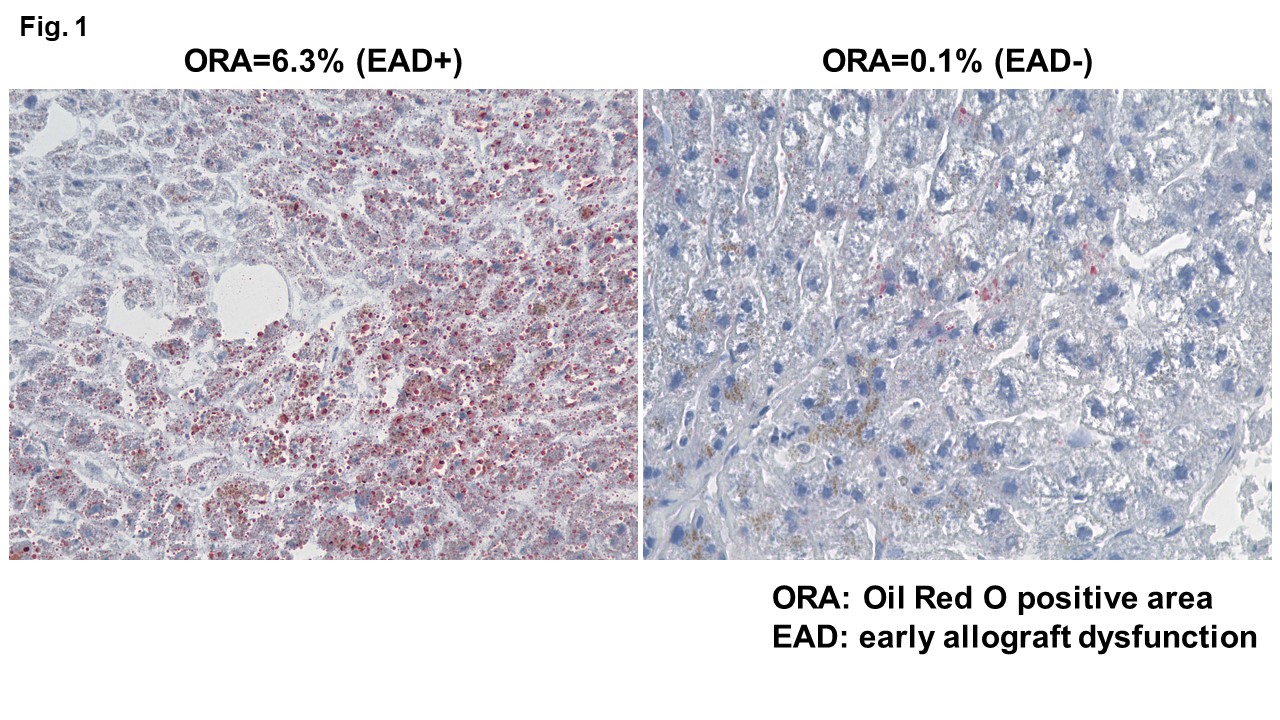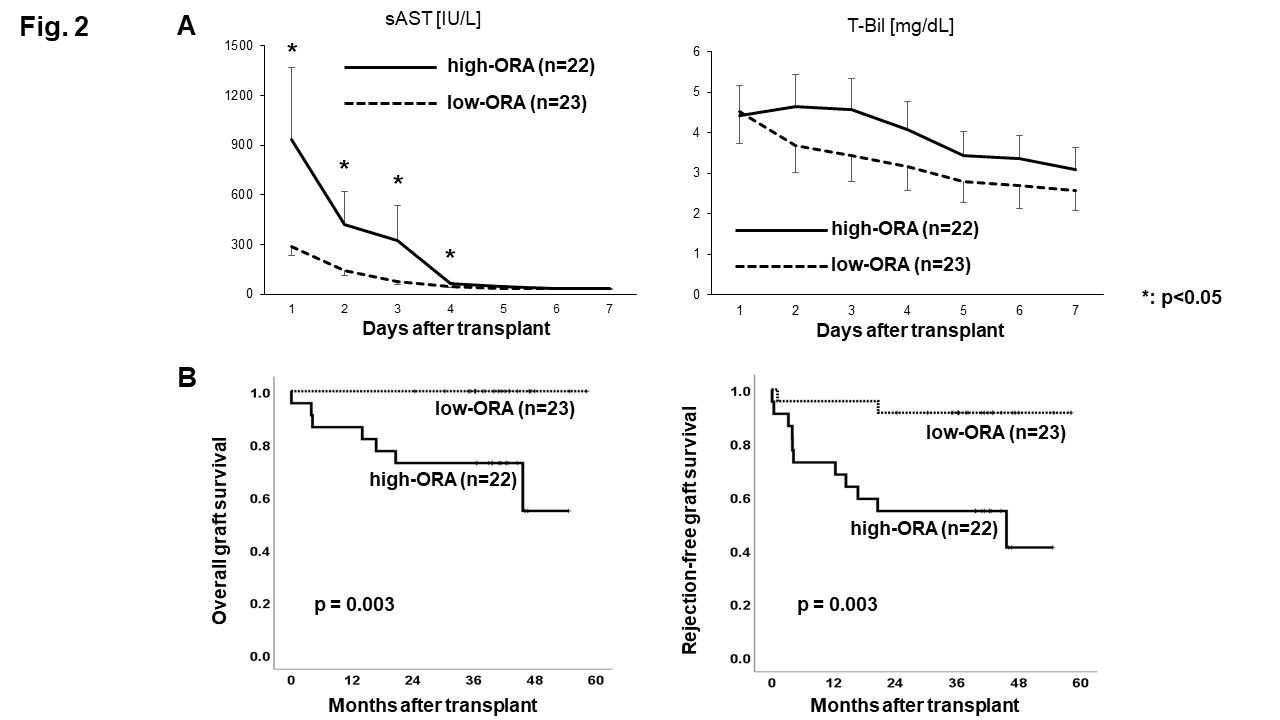Microscopic Hepatic Steatosis Prior to Liver Transplantation Influences Clinical Outcomes
Surgery, Liver Transplant, UCLA, Los Angeles, CA
Meeting: 2019 American Transplant Congress
Abstract number: 257
Keywords: Biopsy, Graft failure, Graft survival, Liver transplantation
Session Information
Session Name: Concurrent Session: Biomarkers, Immune Monitoring and Outcomes II
Session Type: Concurrent Session
Date: Monday, June 3, 2019
Session Time: 2:30pm-4:00pm
 Presentation Time: 2:30pm-2:42pm
Presentation Time: 2:30pm-2:42pm
Location: Room 306
*Purpose: Although liver transplantation (LT) has become a standard care for end-stage liver diseases, early allograft dysfunction (EAD) and rejection crises curtail the outcomes. Considering growing fatty liver epidemics, some donor LT may show unrecognizable levels of steatosis, which in turn may prove pathogenic when exposed to ischemia/surgery stress. We aimed to determine whether donor liver microscopic steatosis influences LT clinical outcomes.
*Methods: Human LT Bx obtained at 2h after reperfusion (n=45) were stained for Oil Red O positivity (ORA; Fig. 1). The endoplasmic reticulum (ER) stress in Lx Bx samples was evaluated by ATF4/CHOP expression (WB). In addition to ORA, donor age/gender/BMI, recipient age/gender/BMI, donation after cardiac death, MELD score, cold ischemia time, warm ischemia time were evaluated by a multivariate analysis based on a Cox regression model to identify predictors of rejection-free LT survival.
*Results: Of 45 liver graft Bx, a median of ORA was 1.9% (range: 0.005-29.0%), while ORA positively correlated with sAST at POD1 (r=0.351, p=0.018). Forty-five LTs were then classified into low-ORA (ORA<2.0%, n=23) vs high-ORA (ORA>2.0%, n=22) groups. There was no correlation between low/high-ORA grouping and donor parameters (age/gender/race/BMI/blood tests). The high-ORA cases showed: 1/ increased levels of ATF4 (p=0.014) and CHOP (p=0.121); 2/ higher sAST at POD1-4 (p<0.05); 3/ persistent post-LT T-Bil levels; 4/ higher incidence of EAD (40.9 vs 13.0%, p=0.035); and 5/ inferior LT survival (3-y: 72.7 vs 100%, p=0.003) and rejection-free LT survival (3-y: 54.5 vs 91.3%, p=0.003) (Fig. 2A/B). A multivariate analysis identified high-ORA as an independent risk factor of rejection-free LT survival (hazard ratio [HR]=14.4, 95%CI=2.8-72.6, p=0.001) along with donor gender (HR=7.0, p=0.012), recipient gender (HR=10.0, p=0.004) and MELD score (HR=1.1, p=0.010).
*Conclusions: Microscopic donor liver steatosis (ORA>2%) critically affected LT outcomes, implying the need for a detailed steatosis evaluation at procurement for precise hepatic quality determination, while future studies with larger patient cohort are warranted.
To cite this abstract in AMA style:
Nakamura K, Hirao H, Ito T, Kageyama S, Kadono K, Dery KJ, Aziz J, Ke B, Kaldas FM, Busuttil RW, Kupiec‐Weglinski JW. Microscopic Hepatic Steatosis Prior to Liver Transplantation Influences Clinical Outcomes [abstract]. Am J Transplant. 2019; 19 (suppl 3). https://atcmeetingabstracts.com/abstract/microscopic-hepatic-steatosis-prior-to-liver-transplantation-influences-clinical-outcomes/. Accessed December 14, 2025.« Back to 2019 American Transplant Congress


